50 years of Dungeons & Dragons: art and insights from Tony DiTerlizzi, Ralph Horsely, Anne Stokes and other leading illustrators
Celebrate the 50th anniversary of Dungeons & Dragons with a look at its rich tradition of fantasy illustration and digital art.
Dungeons & Dragons is celebrating its 50th anniversary. Conceived by Gary Gygax and Dave Arneson, has become enshrined in pop culture over the five decades since it launched as a new kind of game in the early 1970s. It's inspired some of the finest fantasy artists as well as new generations of digital artists (read our guide to the best digital art software to follow in their footsteps). it's now owned by Magic: The Gathering creator Wizards of the Coast, and it's never been bigger.
Whether it's the young protectors of an alien visitor who played it in ET: The Extra Terrestrial or the friends who venture into the Upside Down who played it in the first season of Stranger Things, Dungeons & Dragons has been inspiring artists and storytellers for 50 years, and it's more popular than ever before.
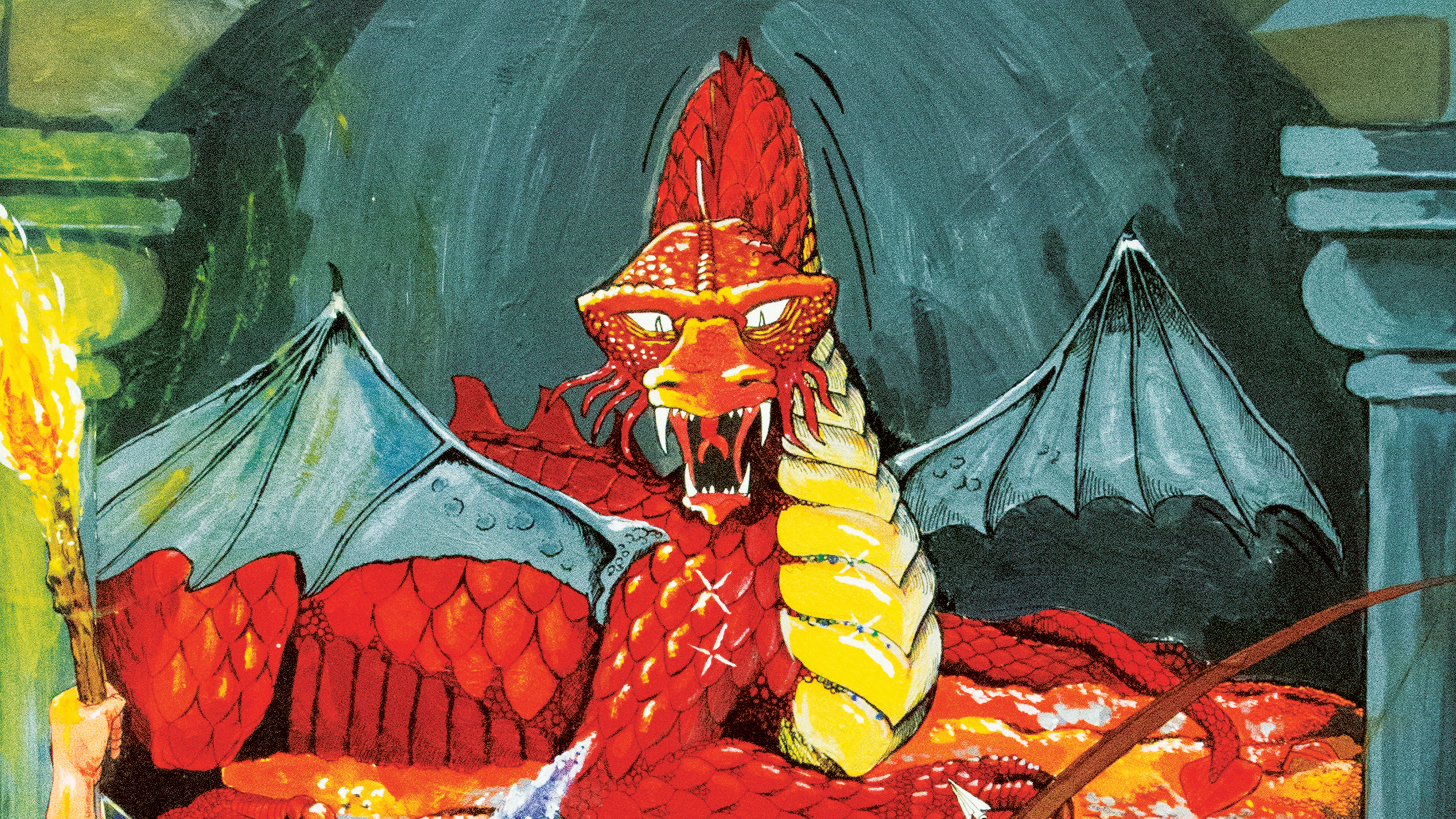
Dungeons & Dragons' vividly realised game mechanics and high-fantasy setting contributed to an ever-growing mainstream interest in fantasy that took flight half a century ago, building on an American fascination with the work of J.R.R. Tolkien that had flourished in the counterculture of the late 1960s. In turn, that moment impacted on the wider pop culture and fantasy storytelling space that developed in the 1970s.
Another decade on with the arrival of the 1980s, the excitement around Dungeons & Dragons (D&D) rested not just on its gameplay, but also on its increasingly sophisticated illustration and image material. That body of work has become key to the game’s legacy, heritage and delight. Over the decades, the artists whose work has enriched the game includes Keith Parkinson, Clyde Caldwell, Tony DiTerlizzi, David C. Sutherland III and Daniel R. Horne.
50 years of D&D: the origins of a legend
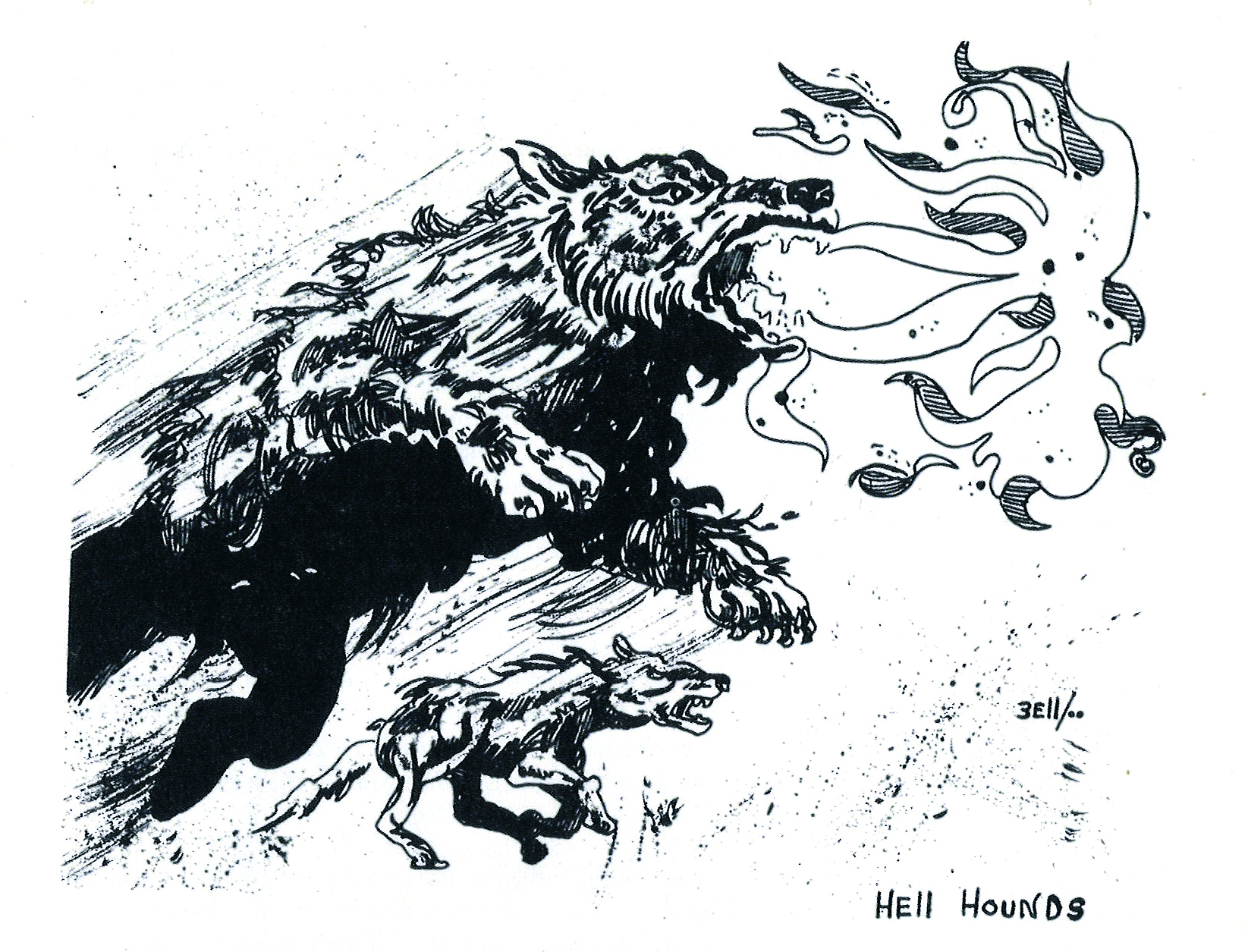
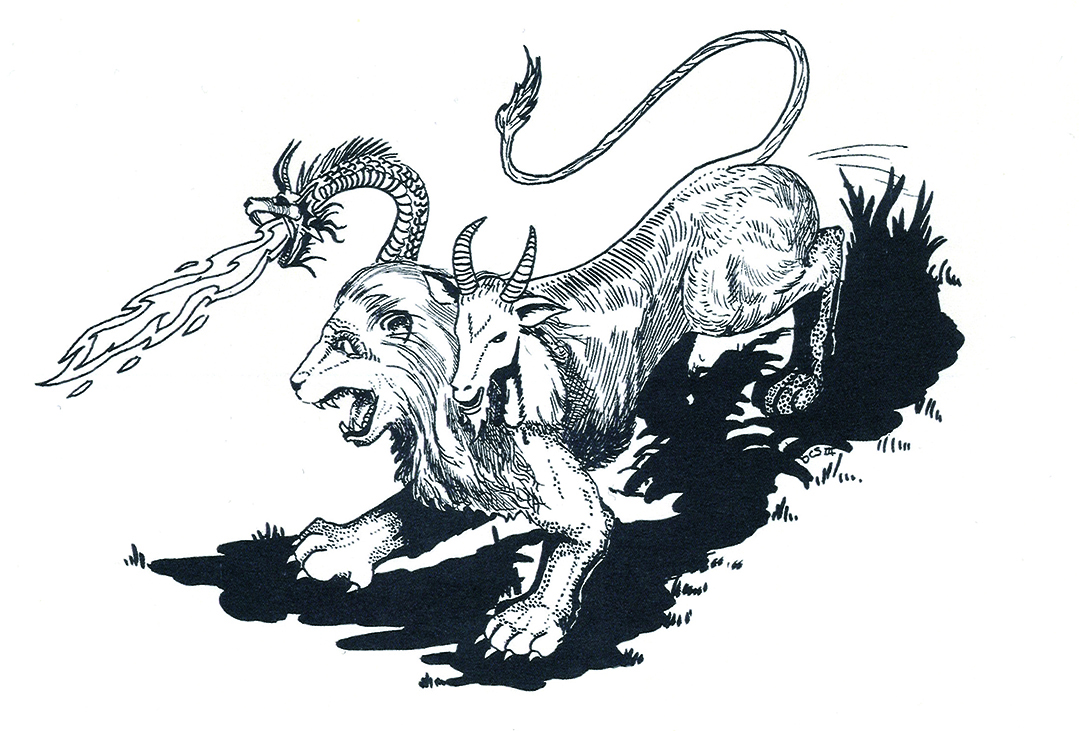
This year marks the 50th anniversary of the launch of D&D, and the journey of its creators Gygax and Arneson to make the game a reality is charted in the recently published, immense and hugely detailed book The Making of Original Dungeons & Dragons: 1970-1977. It’s a vast trove that offers a journey through the earliest documentation and artwork created for the game all the way back in the early 1970s.
In 1974, when D&D was first published, the original box set, as well as the Volume 1 rules booklet, featured a black and white image of a knight on a horse rearing up on its hind legs. The artwork that filled the original set’s trio of booklets made the game’s mechanics take on a sensory power that fired up player imaginations.
Those earliest illustrations have a naivete to their style, but immediately capture the invention of the game and the scope for such a diversity of the beings, entities and creatures of the fledgling game’s world.
Get the Creative Bloq Newsletter
Daily design news, reviews, how-tos and more, as picked by the editors.
50 years of D&D: when Larry met Gary

Key to the game’s developing visual tradition was the landmark art of Larry Elmore. He became the first professional artist to be employed by TSR (Tactical Studies Rules), the company that originally produced and published D&D, to create the illustrations for the game as its popularity and presence became ever more established during the early 1980s.
Particularly notable are his works that adorn the 1983 revisions of the Basic and Expert Set boxes. “I left the military to go to TSR,” Larry explains of his route into the game’s real-life lore. “I loved D&D. It was the most unique game I’d ever played in my life. It played so uniquely that I thought it had to stick around. No game like that had been invented.
“Everything looked very cartoony before I arrived at TSR. It wasn’t very realistic art. I could paint realistic-looking pictures and they had movement in them.”
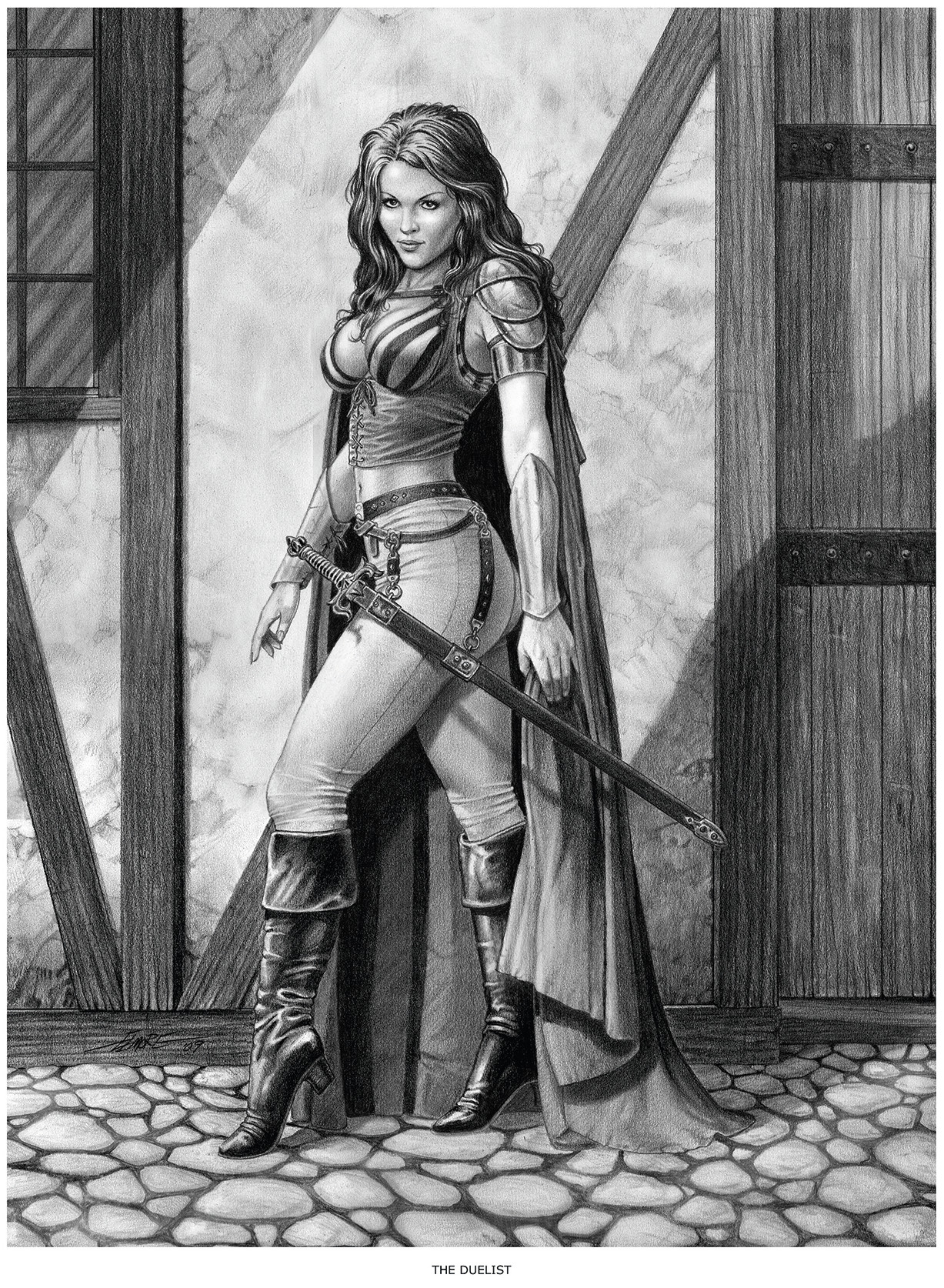
The red dragon that stars on the revised Basic Set box (below) is perhaps Larry’s most famous D&D artwork. “They wanted to redo the red box,” he recalls. “I thought, ‘Man, that’s important’, because that was the game at that time. I started doing some designs. I understood the D&D game system."
He explains: “I was putting in my roughs and had a fighter, thief, a magic user and a stick, and a dragon in the background. In one of my big drawings for the box cover, I was putting everything in. A note came back saying it had been rejected’. Gary Gygax had said that it was ‘too busy’.
“I went down the hall to see Gary. He was a nice guy; a creative person. I went in and asked, ‘What do you want?’ The last big drawing I’d sent through was one little scene from a bigger painting. Gary said, ‘See this here? That’s perfect. Can you do that big? I want it simple – a dragon and a fighter.’ I went back and drew that large for the red [Basic Set] and blue [Expert Set] boxes. I kept it very simple; just that dragon and fighter.”
50 years of D&D: perfecting the dragon designs

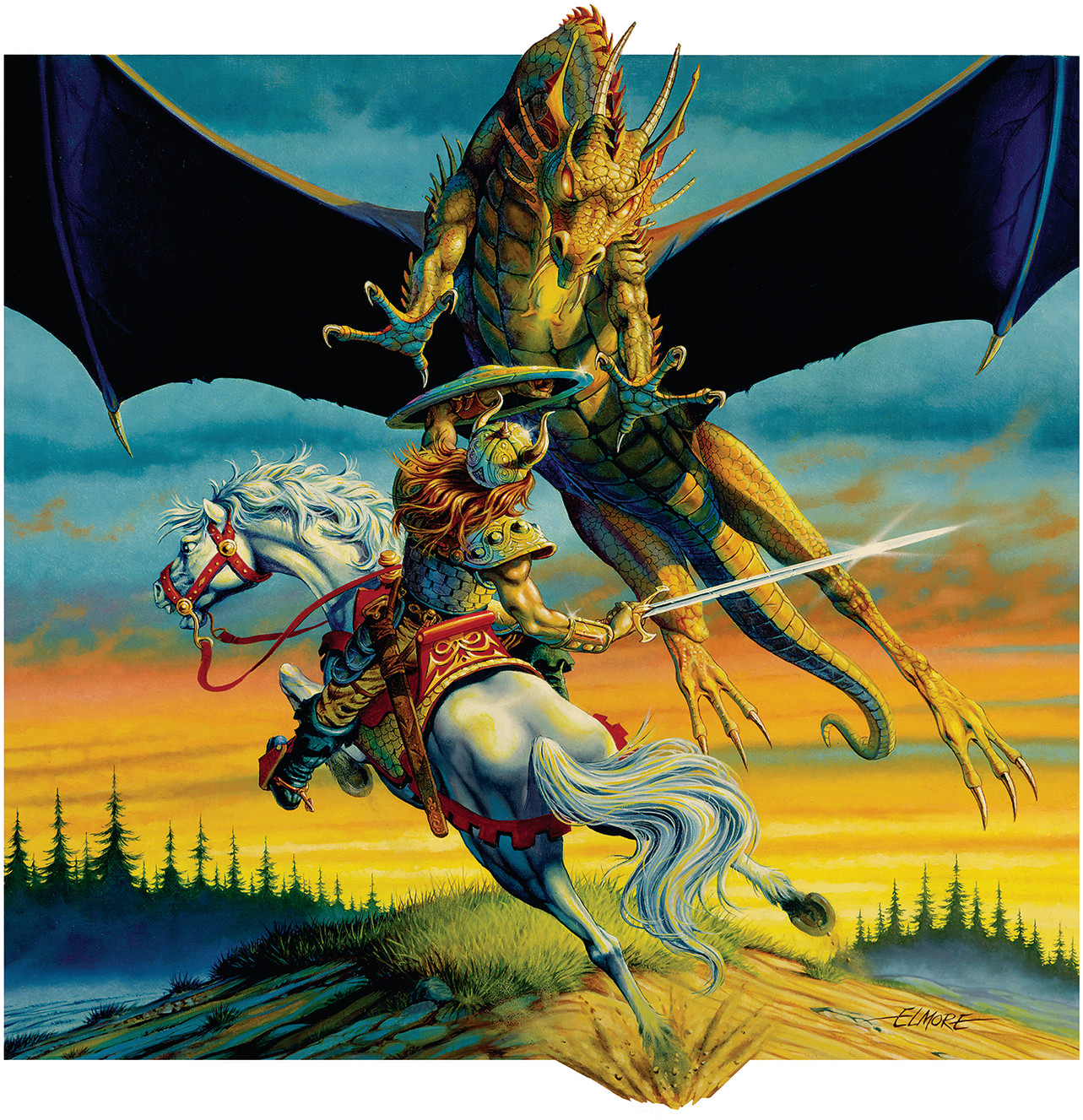
When he first began working with TSR, Larry says that getting the look and feel for D&D’s dragons was a campaign in and of itself. “The first dragon that I ever I drew in my life was for TSR,” he explains. “I went home, got an encyclopaedia, looked up reptiles and dinosaurs, and looked at the teeth, mouths and skeletons.
“The only dragon I’d ever seen published at that time, in 1981, was from the Brothers Hildebrandt: it was a small picture of Smaug. After that I started looking up dragons in history, and I wanted to do these European-style dragons.
“I was told that the dragons in D&D were intelligent; they could use their front legs like arms, they could read, they could cast magic spells. That made total sense. In mine, the front legs become more like an extension of an arm. It’s all based on the same anatomical system.
“Other animals, they’ve got such a long forearm that their knee is almost a wrist. A lot of front legs on animals are like a human arm. Predators have eyes that looks straight, animals that get preyed upon have eyes on the side. Little things like that you start to remember. A dragon is a predator.”
50 years of D&D: illustrating fantastical realms
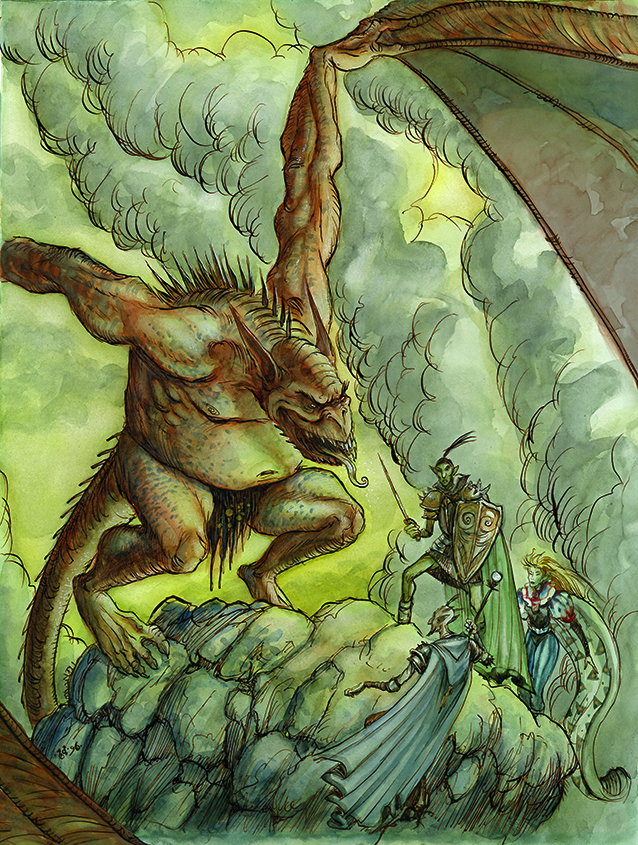
Another masterful fantasy artist and author, Tony DiTerlizzi, says he owes a lot to D&D – from young gamer and burgeoning illustrator to his career today. A little encouragement from his friends was key along the way, too. (Read Tony DiTerlizzi tutorial on how to design engaging book cover art to see more of his new work.)
“For this nerd, Dungeons & Dragons has given so much over the past five decades,” Tony smiles. “It started with its meteoric popularity during the 1980s. As if overnight, everyone put down their Rubix cubes, picked up a 20-sided dice and were transported to an extraordinary world of bloodthirsty monsters, crumbling catacombs and glittering treasure hordes.
“For an anxious adolescent like me, facing off with a ferocious acid-breathing dragon was much easier than facing off with the school bully. I’d spend countless hours, engrossed, copying illustrations from the Advanced D&D Monster Manual," reflects Tony.

Tony DiTerlizzi reflects: “A decade later, I’d be hired to draw those same monsters. You see, at the urging of my gaming group, I’d submitted samples of my artwork to the publishers of D&D. Eventually I was hired, rendering images of rust monsters, owlbears and beholders for years to come.
“As I became more involved with visualising games, like Planescape, I learned that D&D wasn’t just about monsters, magic and treasure – it was about building a fantastical realm that you couldn’t wait to explore. This world-building philosophy became my blueprint for creating books like The Spiderwick Chronicles and WondLa. I wouldn’t have the career or the success I have today were it not for the spellbinding power of D&D.”

Creating a sense of authenticity was a key aesthetic challenge for artist Ralph Horsley in his work on the franchise. “I wanted the adventurers to look properly invested in their role,” he explains. “To have the equipment and the accoutrements that go along with that; a plethora of conveniently placed pouches, scroll cases, weapons and assorted accessories.”
Ralph is also eager to note what it means to him to have contributed to D&D. “I began playing the game when I was 13 and it completely absorbed me, and changed the direction of the art I was creating,” he says. “It was that teenager’s dream come true when I first had work published for D&D. I feel very appreciative of making art for D&D for over two decades.”
Read our feature on the secrets to a successful career in illustration, to learn more about Ralph Horsley and his approach to art.
50 years of D&D: building on history

In the current day, concept artist Alexander Ostrowski is involved in determining the aesthetics of the creatures in D&D. He says working with the game’s storied history, which has defined parts of the fantasy genre, can be a difficult, yet enjoyable, part of the job.
“Redesigning is always a challenge, but a fun one,” Alexander reflects. “The dragons of D&D are very iconic and over the last 50 years helped to define what a dragon is in the cultural consciousness. With designs this well known and loved, it’s challenging to figure out what to change or keep.
“We wanted to bring in fresh ideas and differentiate them more from each other, sort of distil them down to the core idea behind each dragon type. But we also needed to keep what makes each design so iconic, so it was a bit of a balancing act.”
Alexander holds a particular affection for one new design that he’s worked on. “I’m personally fond of the new design for the green dragon,” he says. “This one changed a lot, but it comes down to embodying what they are at their core: sneaky tricksters that lie and manipulate.
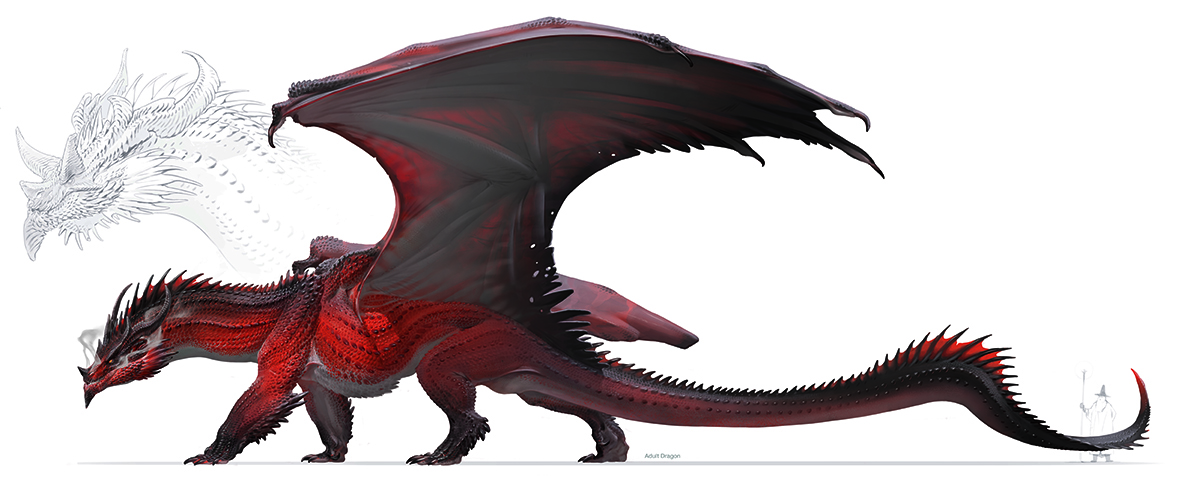
“To show this, we leaned a lot on a slender serpentine body plan, which was originally designed by Simon Lee, so the dragon can twist through their forest home easily. This way it never stands out much and can hide easily.
“On top of that we gave it a cobra hood, colour-changing abilities, retractable fangs, wings that can fold in stages, and a fin-like structure along its spine that can also fold in. That way this design is all about levels of reveals layered on top of each other.”
Of being able to contribute to the visual heritage of D&D, Alexander adds: “I feel extremely fortunate and honoured to have been offered this opportunity, and also for all the trust my amazing art director Josh Herman put into me, especially with some of the most important creatures for this franchise. I play a lot of D&D, so contributing to this game makes my inner kid absolutely giddy with joy.”
50 years of D&D: ‘girls kick arse in armour’
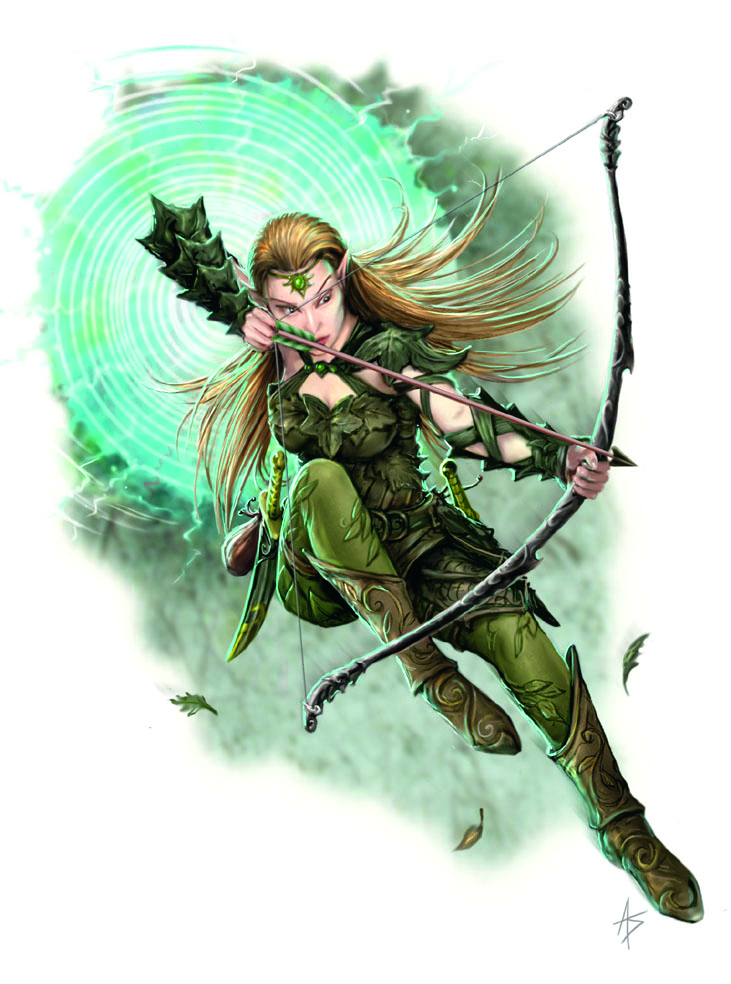
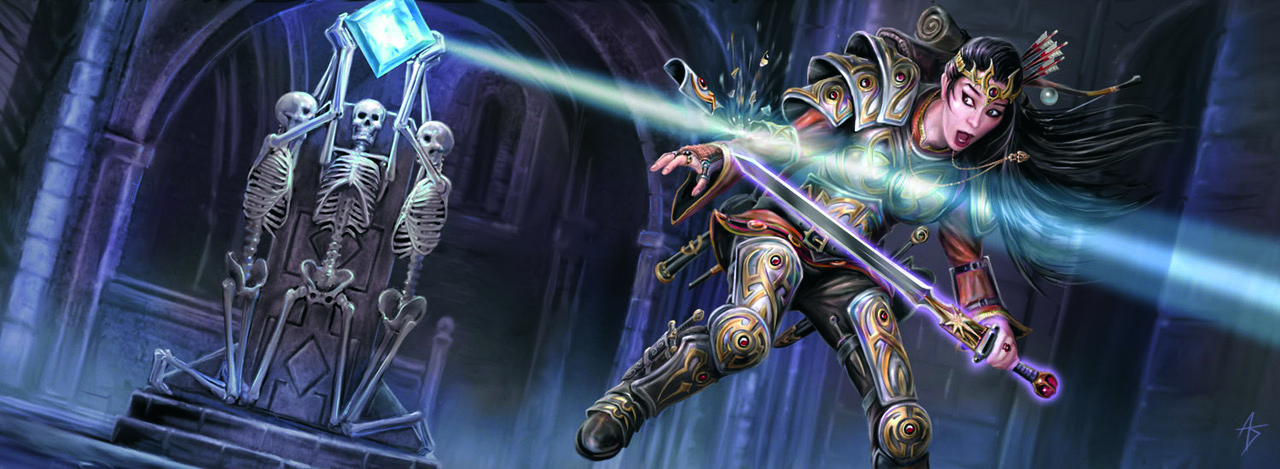
An artist who has worked on core rule books, supplements and miniatures, Anne Stokes says creating art for D&D has been a personally meaningful experience. “Once upon a time a very young girl called Anne was read a bedtime story by her father, called The Hobbit,” she reflects. “From then on, I was captivated by fantasy. I discovered D&D as a young person and was totally hooked.
“I was enthralled by the art of Larry Elmore and Jeff Easley, and wanted to be like them. I drew and drew to improve my skills, and when I started work I sent many submissions off for portfolio reviews. One amazing day I was phoned by the D&D head art director to ask if I’d work on their new release. I was over the moon," she says.
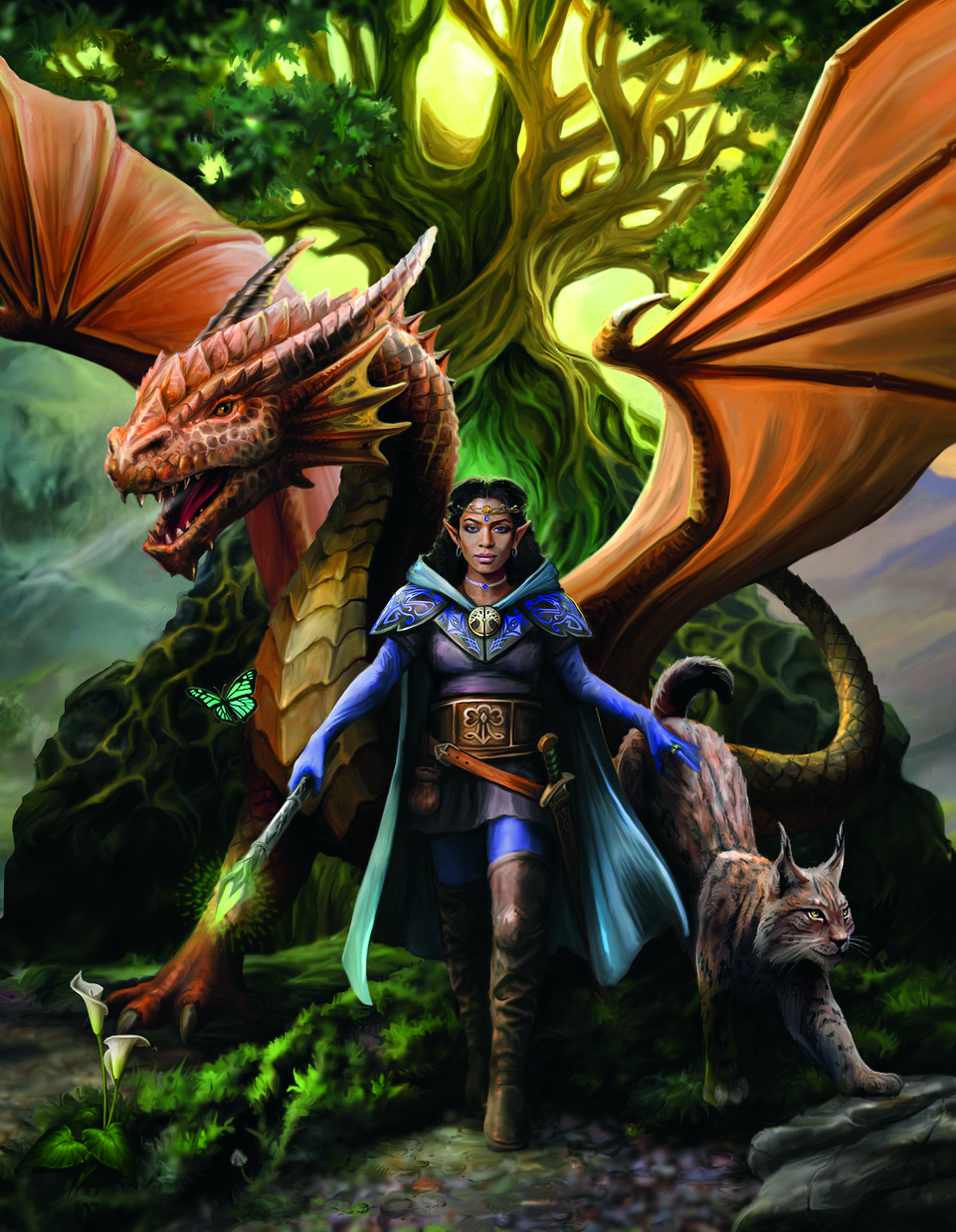
Anne continues: “As a young artist trying to make it in a male-dominated games industry, I was told on more than one occasion to forget it. This only made me more determined to succeed.”
There’s one piece Anne created that she as a special fondness for. “My painting Epic Traps, an illustration for the 4E Dungeon Master’s Guide, is perhaps my favourite,” she says. “A challenging subject of a female warrior with very elaborate kit, having set off a trap by moving in front of a skeleton statue holding a crystal. This was made all the more complex by the fact that it was a very horizontal space for the art.
“I was quite often hired to paint the female characters as the art directors felt I did a good job on that, both with the anatomy, being a woman myself, and also not making them overly sexualised. Girls kick arse in armour and I’m the first to fly that flag.”
This content originally appeared in ImagineFX magazine, the world's leading digital art and fantasy art magazine. Limited numbers of ImagineFX print editions are available for delivery from our online store (the shipping costs are included in all prices).
Inspired? Read our guides to the best software for digital artists and the best drawing tablets to start creating yourself.

Thank you for reading 5 articles this month* Join now for unlimited access
Enjoy your first month for just £1 / $1 / €1
*Read 5 free articles per month without a subscription

Join now for unlimited access
Try first month for just £1 / $1 / €1

James has written about movies and popular culture since 2001. His books include Blue Eyed Cool: Paul Newman, Bodies in Heroic Motion: The Cinema of James Cameron, The Virgin Film Guide: Animated Films and The Year of the Geek. In addition to his books, James has written for magazines including 3D World and Imagine FX.
- Tanya CombrinckFreelance writer
